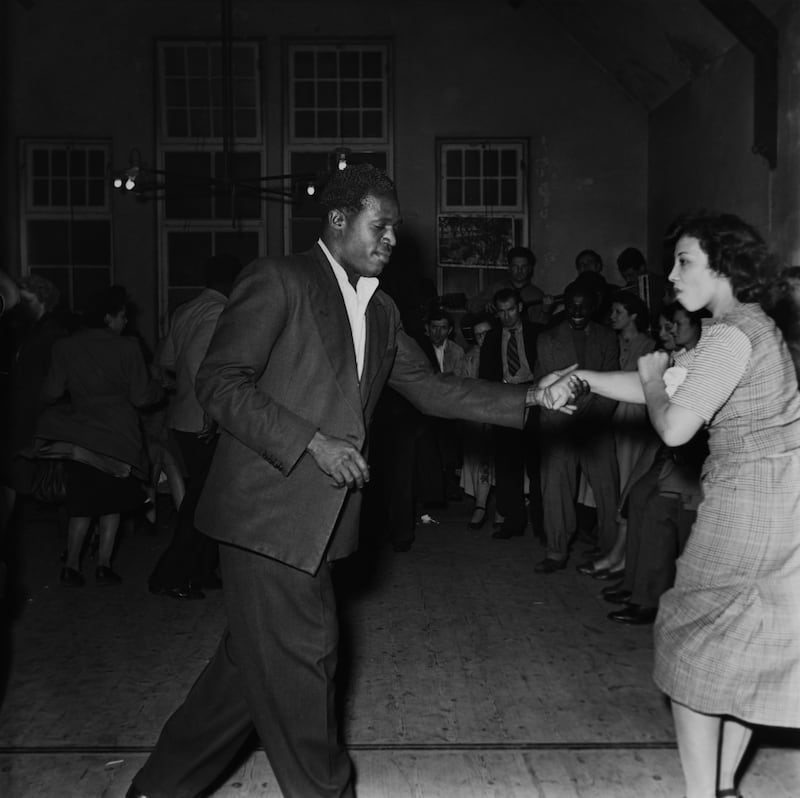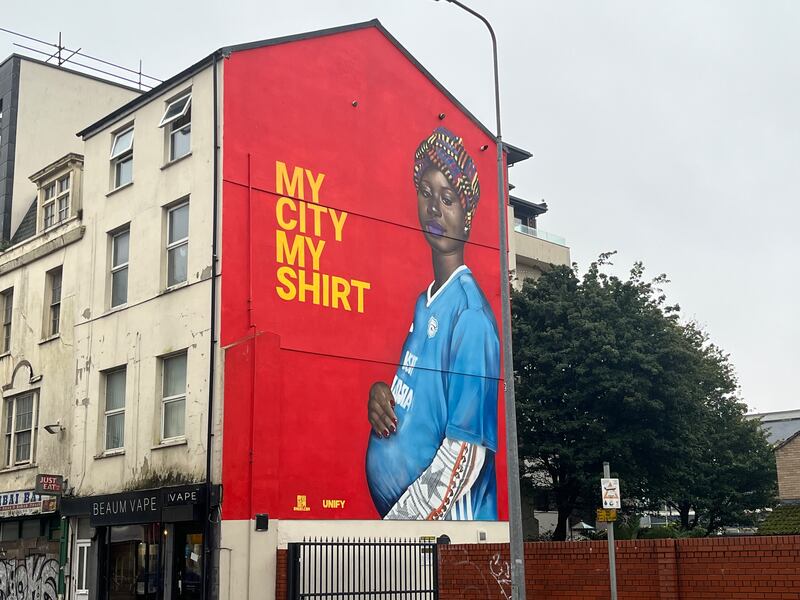Cardiff city centre on Monday evening was a sea of red jerseys. This would not be unusual in the sports-mad Welsh capital, but some of them did not look quite right. Upon closer inspection, a minority were Montenegrin – red like Wales, but with an eagle instead of a dragon. The Welsh were hosting the Balkanites for a Nations League football match. All roads led to Cardiff City stadium.
That it is a cliche makes it no less true, but football really can be a unifying force. In Cardiff, this applies off the pitch as much as on it. Football has provided the backdrop in recent years for some of the most arresting visual celebrations of the city’s long-standing ethnic diversity.
London is usually assumed to be the birthplace of multicultural Britain, but it was probably Cardiff. In the mid 19th century, the city’s docklands area mushroomed as an export hub for Welsh coal. Seafarers from across the world settled there. From the 1850s onwards, almost a century before the Windrush generation arrived in London, Cardiff was home to many Yemeni, Somali and Afro-Caribbean dock workers. They settled in a docklands area known as Tiger Bay.
The main thoroughfare of the area was Bute Street, which by the turn of the 20th century was lined with the sort of restaurants and lodging houses that wouldn’t appear elsewhere in Britain for another 40 or 50 years. Outlets such as the Cairo Cafe, Singapore Cafe and Ebony Cafe abounded on Bute Street and Loudoun Square off the main drag.
READ MORE
Interracial mingling of the sexes was tolerated in Tiger Bay, including later unions between local white women and black American GIs stationed nearby during the second World War. The area was no ethnic utopia. Its residents experienced discrimination and other denizens of Cardiff had disparaging nicknames for it. But it wasn’t a race-fuelled tinderbox, either.

Tiger Bay’s demise as a distinct enclave began in the 1960s, when the local authorities started clearing slums. Much of the heartland of Tiger Bay to the west of Bute Street was rebuilt as generic council estates. In the 1980s and 1990s, a plan was hatched to flood the southern end of Tiger Bay in an enclosed harbour, around which modern entertainment and hospitality outlets were built. This area, also home to the Welsh parliament, the Senedd, is now known as Cardiff Bay.
Echoes of Tiger Bay still exist on Bute Street, which has several Yemeni and Somali shops and cafes. The Butetown area to the west of the street is still the most diverse part of Cardiff; census figures show that more than a third of its residents are of various ethnicities other than British white. Overall, roughly 10 per cent of Cardiff’s population are Muslims.
James Street runs along the southern end of Butetown near the bright lights of Cardiff Bay. In 2021, local art group Unify, founded by Yusuf Ismail and Shawqi Hasson, painted a huge mural on the gable end of a nearby building. Under the banner My City, My Shirt, it showed a black immigrant woman, Maimuna Indjai, wearing a blue Cardiff City football jersey, an African headdress and an enigmatic smile. It quickly became known locally as “Cardiff’s Mona Lisa”.

Set against a red background, the startling image was embellished by the sight of Indjai cradling her heavily-pregnant belly. Predictably, there was a local outcry in 2022 when it was painted over for a McDonald’s advertisement. Unify secured another gable end further along James Street, and the piece was repainted there, where it remains today.
For the Euros tournament held in 2021, Unify painted another football-themed mural on Quay Street that soon earned widespread acclaim. It showed a mixed-race women with an Afro haircut in a Wales jersey under the banner My Cymru, My Shirt. It was meant to evoke the image and hairstyle of George Berry, born to a Jamaican father, who made his debut for Wales in 1979, six months after Viv Anderson became the first black man to play for England. It, too, was painted over last year. This week in its place there was a huge ad for the film Transformers One.
[ Did Leonardo give 'Mona Lisa' a younger sister?Opens in new window ]
Almost a half century before the more-acclaimed Anderson and Berry, however, the first black player in Britain to play international football was Eddie Parris, a Welshman whose father came from Barbados. He made his Wales debut in 1931 – a 4-0 loss to Northern Ireland – but got only one cap.
On Monday, the sea of red jerseys and, by now, happy faces, returned to the city after the match against Montenegro. Wales won 1-0. Ben Cabango, whose father is Angolan, had a solid game in defence and Sorba Thomas, whose father comes from Sierra Leone, came on to relieve the pressure near the end.
The Wales supporters retired to the city’s kebab shops and curry houses for celebratory meals.















